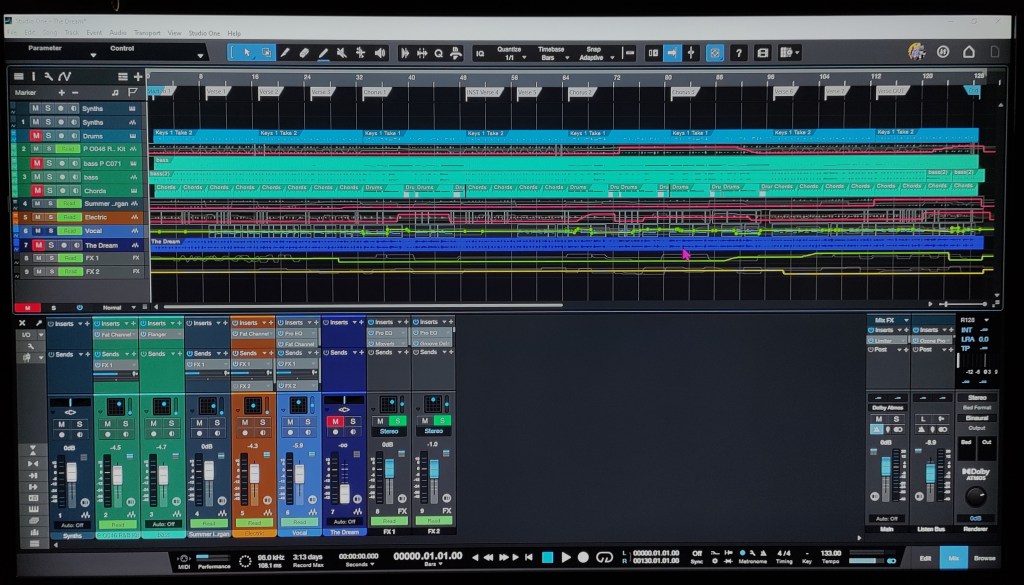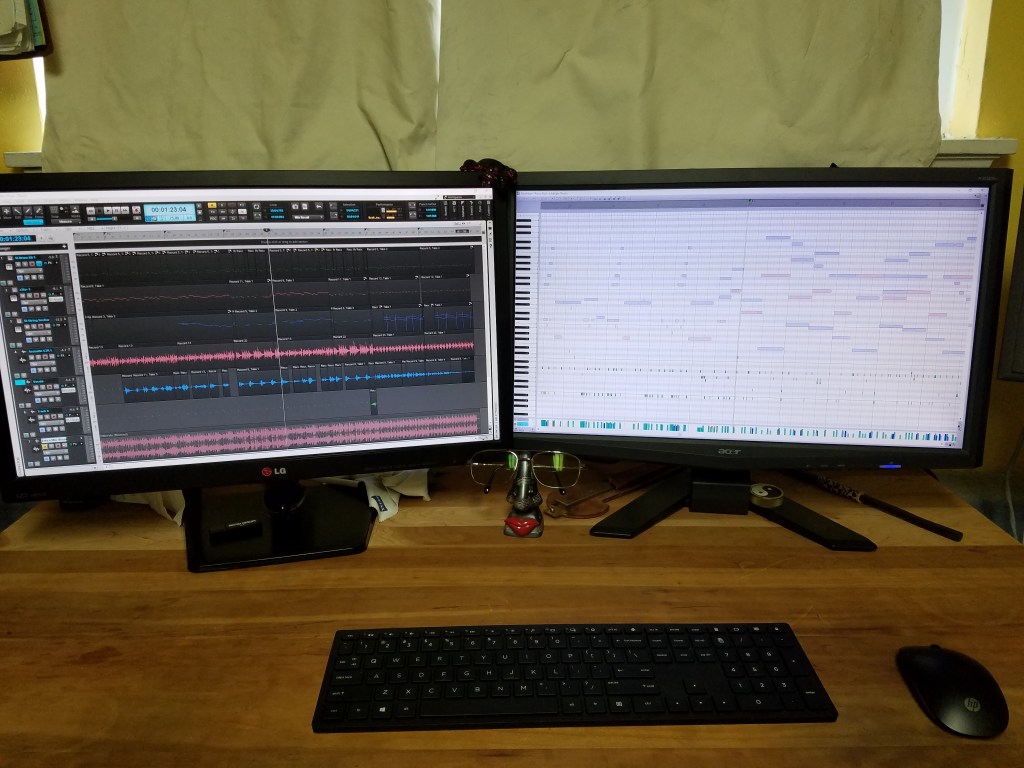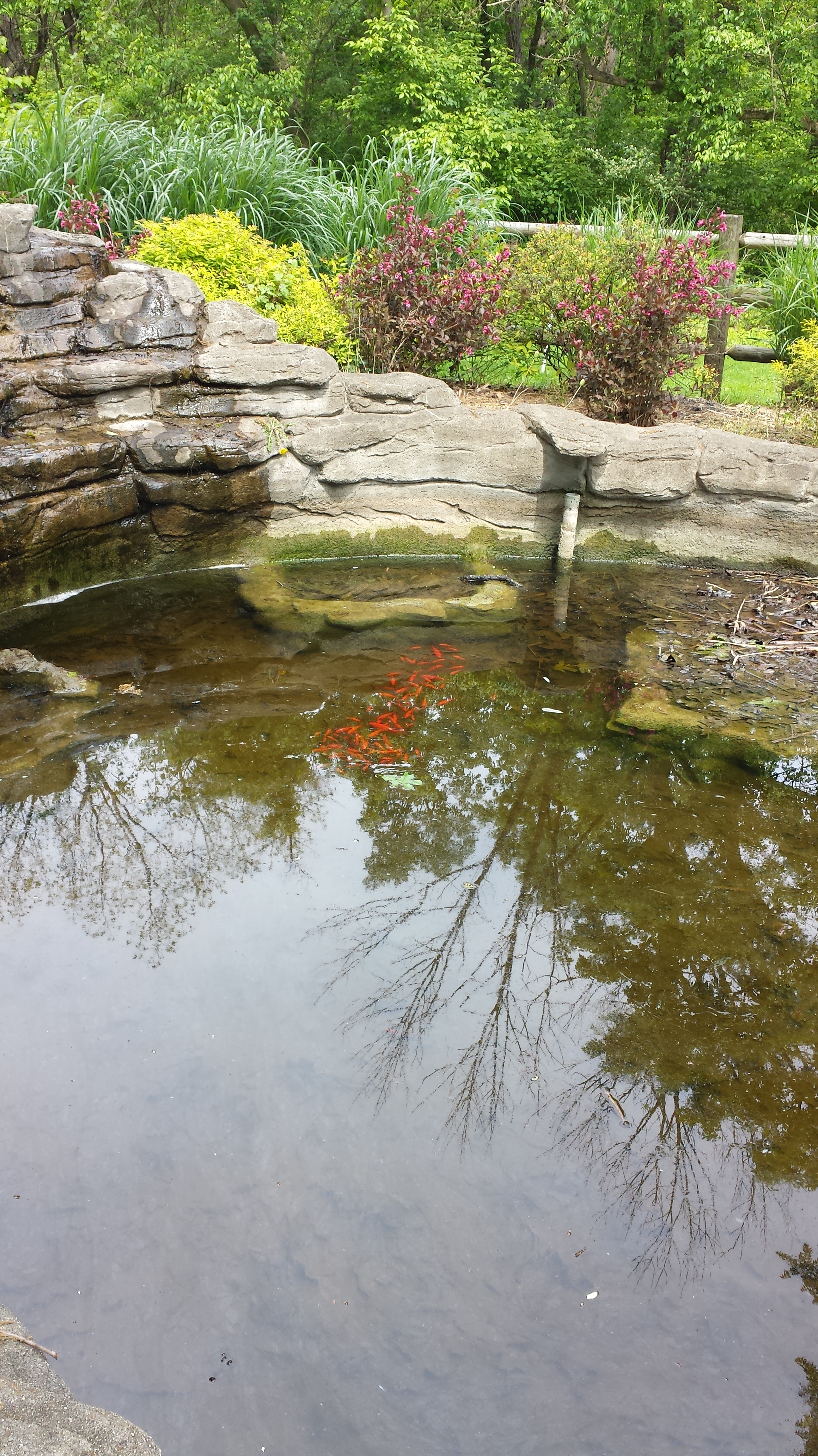
Data for spatial panning for each track
Thank you for the response to my mix of “The Dream” using Dolby Atmos. Not to geek out on you again, but this is something cool that you have probably already experienced and can relate to. Many of you are familiar with the amazing sound system upgrades in theaters and home audio during the last few years. Dolby has always been a big name in noise reduction and surround sound for movies and the like, but they have upped their game to take advantage of new tech and to deliver needed changes for next-gen venues or virtual reality applications going forward.
To make the explanation simple, we are all used to stereo sound with two speakers on opposite walls or using ear buds and headphones. A few decades ago the industry tried a quad system for the first try at a surround sound playback. Novel, but it went nowhere for a long time.
Your home surround sound or home theater system has been using multiple speakers for a while and added a sub woofer for the very low sounds – (sounds might not be the right word here. You feel the sub frequencies more than you hear it. This gives you the earthquake-like vibrations for sound effects).
Movies and other applications are using Dolby’s Atmos to reach the next experience level. Dolby Atmos provides programming to create a realistic 360 Atmosphere – as in SPHERE. Instead of two or four speakers and a subwoofer, there are countless individual out-puts for a large number of floor speakers that surround the listener(s) in a precise configuration. Then you add the sub-woofer as before but now we bring in speakers mounted in the ceiling (if room allows) or on stands close to the celing. Now, if they want to make it sound like some one is talking behind you, they play that sound through specific speakers in the back of the ‘listening room’. If there is a helicopter flying over head you are sure to look up expecting to see it there.
I have been using Presonus Studio One+ as my DAW or software recording system for a while. In their most recent update they included a version of Dolby Atmos. I don’t make action movie soundtracks, but the ability to use this tecnology to mix songs and bands gives us a whole new level of mixing.
Instead of placing the performer somewhere between the left and the right speaker as our only option, we can now make the sound feel like you are sitting ON the stage. You will be able to hear the drummer sitting on a riser ABOVE you in front, the guitar player on one side, the brass section on the other. As the singer walks around the ‘room’ they can literally walk behind you.
Now, if you are like me and don’t have a bunch of powered speakers and unlimited out-put ability …… you can get a lot of the effect using good headphones. The serious number crunching of the Atmos program gives you the illusion of three dimensional space in the headphones and for virtual reality sets.

The above is a screen shot from a simple song I have written. It shows the different tracks below, and above panel shows the Spatial Panning data used on each track to give placement info to the speakers.
I will also post one of my songs below now, so you can hear a bit of what Atmos has to offer. Please keep in mind that using headphones is obviously a bit limited when it is compared to the massive speaker system in a theater, but, you will hear a difference. For music mixes, you may not hear a lot of movement. Try closing your eyes while listening through good headphones and with the speakers OFF. You will soon be able to point at where the performer or instrument is coming from – not just left or right – but literally point to it, up – down – left -right – in front and inside your head if desired lol.

….this screen gives you an idea of the ‘room interface’ you work in. Each dot represents a sound or instrument and can be sonicly ‘placed’ anywhere by moving the dot as needed.
Below is my Atmos mix of a new song I wrote and recorded, called “Still Your Choice”. I hope you get to hear the effects Atmos has to offer in this mix. While it may not be your type of music as I claim not to be commercial to begin with, the song shows how ‘open’ or deep a two track recording can be!
MIDIMike







